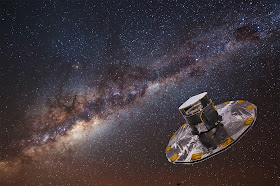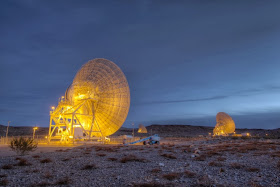
ISS - Expedition 38 Mission patch / EVA - Extra Vehicular Activities patch.
Dec. 21, 2013
Expedition 38 Flight Engineers Rick Mastracchio and Mike Hopkins wrapped up a 5-hour, 28 minute spacewalk outside the International Space Station at 12:29 p.m. EST Saturday, completing the first in a series of excursions aimed at replacing a degraded ammonia pump module associated with one of the station's two external cooling loops that keeps both internal and external equipment cool.
NASA Begins Series of Spacewalks to Fix Coolant Pump on ISS
During Saturday’s spacewalk, the two astronauts focused on removing a degraded pump module from Loop A of the station’s external Active Thermal Control System. That pump module encountered a problem Dec. 11 when an internal valve stuck in an incorrect position, causing temperatures in the station’s cooling lines to drop. On Monday, Mastracchio and Hopkins will venture outside the station again to begin the installation of a replacement pump module. If necessary a third spacewalk would occur on Christmas day to finalize the installation.
Image above: Astronaut Rick Mastracchio works outside the International Space Station during the first of a series of spacewalks to replace a degraded ammonia pump module. Image Credit: NASA TV.
After exiting the Quest airlock, Hopkins made his way out to Saturday’s worksite at center of the Starboard 1 truss segment. Mastracchio meanwhile attached himself to a foot restraint at the end of the station’s 57-foot robotic arm so that Flight Engineer Koichi Wakata, the robotics operator for the spacewalks, could fly Mastracchio to the worksite and position him for his various tasks.
The two spacewalkers first spent some time demating four ammonia fluid line “quick disconnects” from the pump module.
Once the four fluid lines were disconnected, Mastracchio and Hopkins worked to attach the fluid lines to a pump module jumper box, which allows the ammonia to reach the system’s plumbing in the ammonia and nitrogen tanks to keep it in a liquid state.
Image above: Spacewalker Rick Mastracchio works to disconnect the fluid lines from the degraded pump module in this view from the NASA astronaut's helmet camera. Image Credit: NASA TV.
Afterward the spacewalkers installed a generic thermal cover over the pump module jumper and ammonia fluid lines.
With the spacewalk proceeding well ahead of schedule, Mission Control in Houston informed Mastracchio and Hopkins that they could press ahead with the first task originally planned for Monday’s spacewalk –removing the degraded pump module from the starboard truss and attaching it to a stowage location on the Payload Orbital Replacement Unit Accommodation (POA) on the station’s railcar, or Mobile Base System.
While Hopkins set up the POA and an adjustable grapple fixture, Mastracchio removed the five electrical connectors from the pump module and unfastened the module from the truss.
Image above: Astronaut Rick Mastracchio holds the degraded pump module while the International Space Station's robotic arm guides the module to a grapple fixture. Image Credit: NASA TV.
With Mastracchio holding the 780-pound pump while he was attached to the end of the robotic arm, Wakata guided the arm to attach the module to the grapple fixture and activated the snares to hold it in place.
Mastracchio now holds 43 hours and 58 minutes of spacewalking time during seven spacewalks, and Hopkins now holds 5 hours and 28 minutes during one spacewalk.
Saturday’s spacewalk was the 175th in support of space station assembly and maintenance.
For more information about the Space Station (ISS), visit: http://www.nasa.gov/mission_pages/station/main/index.html
Images (mentioned), Video, Text, Credit: NASA / NASA TV.
Greetings, Orbiter.ch









.jpg)































.jpg)









